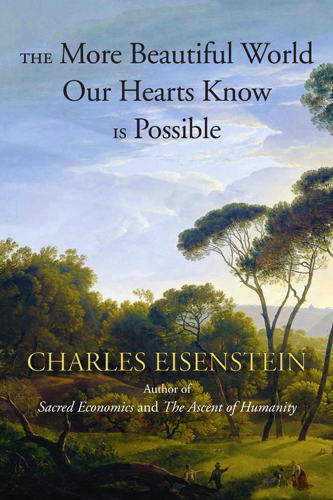Climate — A New Story
Chapters
Chapter 4: The Water Paradigm
A Different Lens
One thing that gets lost in the climate debate is that Earth’s climate is already severely deranged. This is hard to see when the conversation is about global averages and the predictions of computer models. But severe climate change is already devastating the lives of millions of people. To see it, we have to look through a different lens—not temperature and carbon, but water.
In recent decades, the word “climate” has increasingly become a proxy for “temperature.” Read almost any discussion of the droughts and floods that are striking nearly everywhere on the planet with increasing frequency, and you’ll see climate change mentioned as a major—if not the major—culprit. Traditionally, though, it was as common to speak of a wet or dry climate as it was a hot or cold climate. Increased levels of drought and flooding are not caused by climate change; they are climate change.
While most of the discourse around climate change focuses on temperature, water is the climatic factor that most directly impacts life. Life flourishes throughout the hot equatorial zone because of the presence of abundant rainfall, while deserts, because they receive little precipitation, are comparatively barren whatever their temperature.
The ability of land to support human life also depends on water. The more regular and abundant the precipitation, the better able the land is to sustain large numbers of people. A hotter-than-average summer is usually no great threat to crops; a drought threatens catastrophe.
Of course, temperature bears a strong influence on precipitation patterns, most directly through its effect on wind and ocean currents. Moreover, the water cycle and the carbon cycle are closely entwined. We cannot speak of one without speaking of the other. The shift of emphasis I am about to offer is nothing as simplistic as “Water is more directly impactful, so we should forget about carbon.” What we will see is that by putting water first, the carbon problem and the warming problem will be solved as well.
Water vapor is the dominant greenhouse gas on the planet, accounting for 80 percent of the greenhouse effect. Its effects are hard to model, however, because unlike carbon dioxide it is not evenly distributed throughout the atmosphere. Furthermore, when it condenses into clouds, water exerts a cooling effect by reflecting sunlight during the day, as well as a warming effect by insulating the surface and absorbing long wave infrared radiation, especially at night, depending on the type and height of the cloud. The evaporation and condensation of water also transfers heat from lower layers of the atmosphere to higher layers, and horizontally from one region to another. The interplay of these regionally variable effects is what makes water difficult to accurately model.
Making it harder still is one critical factor: life. Until recently, rainfall patterns and cloud formation were thought (by scientists) to be primarily a function of geophysical processes. Where there happened to be ample rains, life flourished; where there was little rain, drylands formed. This view is at home with the deeper belief that the planet is a host for life, but is not itself alive; that life is but a fortuitous biological scum atop an inanimate rock.
James Lovelock and Lynn Margulis’s Gaia Theory, which posits that life creates the conditions for life, put an end to the conceptual separation between geology and biology. As this paradigm percolates through science, it encourages a new perceptual stance that reveals things that were previously invisible—invisible to scientists, that is, although not to traditional and indigenous people.
The paradigm shift when it comes to climate is not really from carbon to water; it is a shift from a geomechanical view to a Gaian view, a living systems view. Whether we are looking through the lens of carbon or water, from the living systems perspective we see that climate health depends on the health of local ecosystems everywhere.
The health of local ecosystems, in turn, depends on the health of the water cycle, and the health of the water cycle depends on the soil and the forests.






